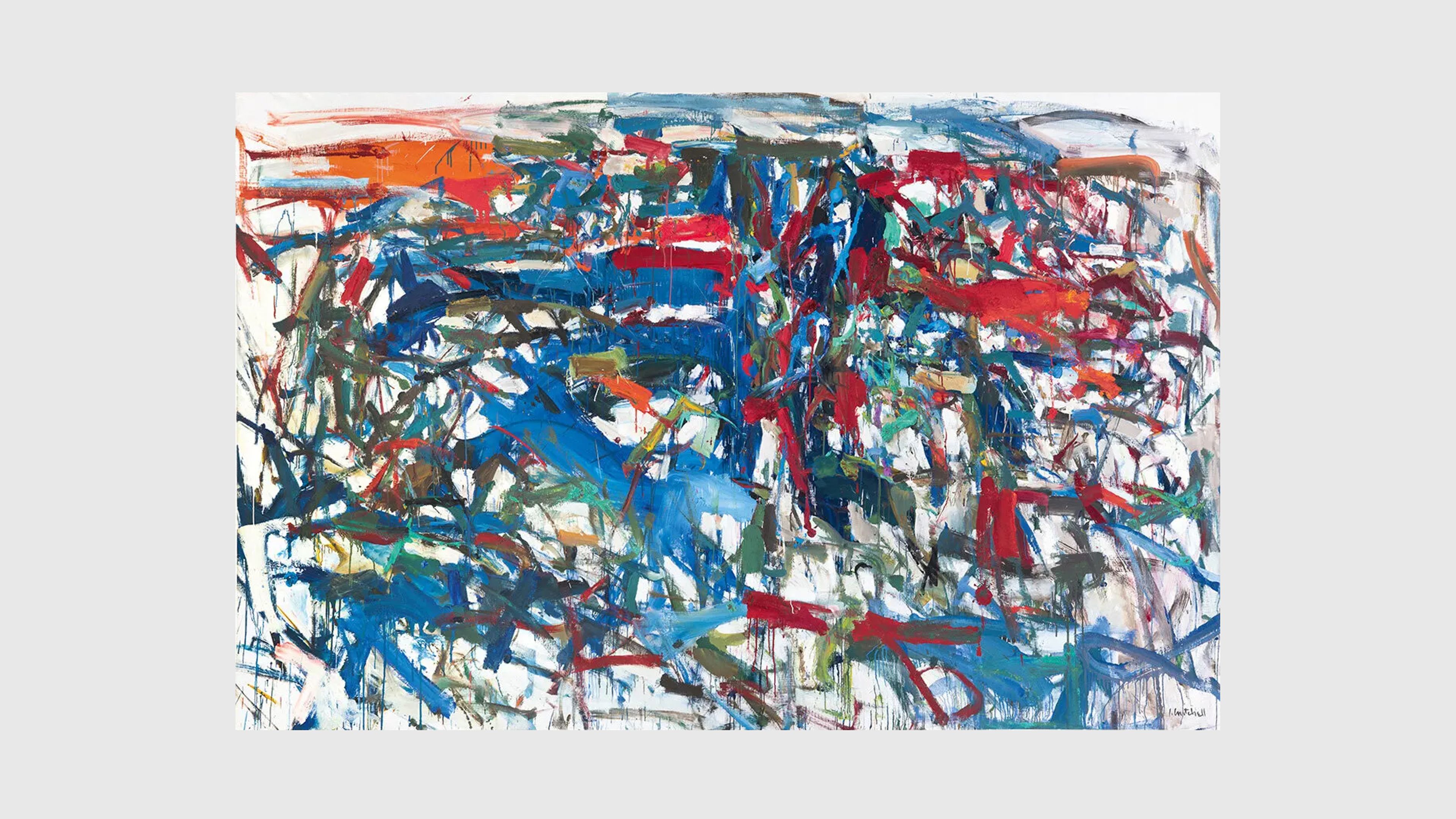'The Roots of Joan Mitchell’s Greatness' by Tausif Noor
September 2021
A retrospective at the San Francisco Museum of Modern Art tracks how the painter’s signature style extended the contours of Abstract Expressionism.
In 1948, Joan Mitchell was a 23-year-old artist living in a drafty apartment in Paris. She had arrived in France in the aftermath of World War II to a nation that was still reeling from rations and riots. A newly minted graduate of the Art Institute of Chicago, Mitchell had come to Paris to study the history of French painting and learn the techniques of the masters but found that her workaholism had frayed her nerves and rendered her too anxious to take part in the bustling social life of the city. Mitchell spent her nights awake, feverishly trying to improve her craft, huddling around her stove for warmth. “I’m where I’ve always wanted to be — stove — bread & wine & canvases — I’m not depressed even — just arrived at a real knowledge of where I don’t belong which is everywhere,” she wrote in October of that year in a letter to her lover, Barney Rosset. Mitchell’s frustration during this early period in Paris, when she felt she had “painted terribly,” may have stemmed from her perceived failure to measure up to the artistic giants she so admired. As a teenager, she was raised on a steady regimen of music, dance, sports and art, with regular trips to the Art Institute to see 19th-century masterpieces by Cézanne, Monet and van Gogh.
At the San Francisco Museum of Modern Art, a major retrospective opening on Saturday tracks how Mitchell’s steely resolve to be written in history as one of the greatest painters produced a signature style that extended the contours of Abstract Expressionism. Spread across 10 galleries, with some 80 oil paintings and works on paper, the exhibition demonstrates how the bold physicality of Mitchell’s brush strokes allowed her to breathe new life into Abstract Expressionism, even as it had become outmoded, stateside, by Pop Art and Conceptualism. The show, curated by Sarah Roberts, head of painting and sculpture at SFMOMA, and Katy Siegel, senior programming and research curator at the Baltimore Museum of Art (where the exhibition will be staged in March 2022 before traveling to the Fondation Louis Vuitton in Paris next fall), ingeniously reconsiders Mitchell’s legacy so that we see her developing a cosmopolitan, trans-Atlantic sensibility rooted in the tradition of 19th-century French landscape and history painting.
